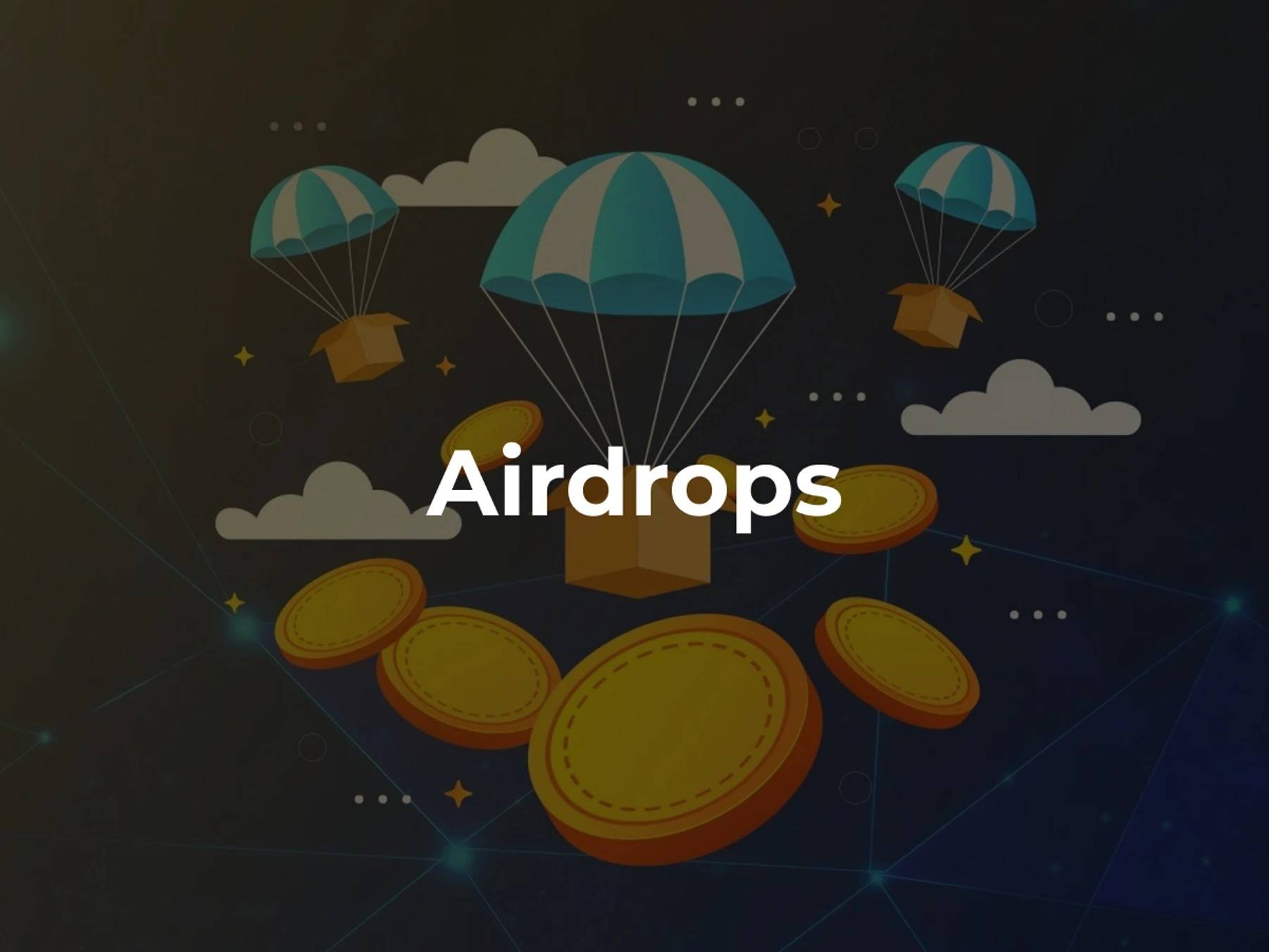위키 구독하기
Share wiki
Bookmark
Airdrop
에이전트 토큰화 플랫폼 (ATP):에이전트 개발 키트(ADK)로 자율 에이전트 구축
Airdrop
암호화폐 에어드롭은 코인이나 토큰을 지갑 주소로 보내는 마케팅 전략입니다. 소량의 새로운 암호화폐가 활동적인 블록체인 커뮤니티 회원들의 지갑으로 무료로, 또는 돈을 발행하는 회사가 보낸 게시물을 리트윗하는 등의 작은 서비스에 대한 대가로 보내집니다. [1]
개요
블록체인 프로젝트는 더 넓은 채택을 얻고, 암호화폐 프로젝트에 대한 인지도를 높이고, 거래소에 초기 코인 제공 (ICO)로 상장될 때 사람들이 거래하도록 하기 위해 무료 토큰을 제공합니다. 더 많은 보유자는 종종 긍정적인 지표로 간주되며, 이는 토큰 소유 측면에서 프로젝트를 더욱 분산화시키기도 합니다. 암호화폐 에어드롭은 또한 수령인이 프로젝트를 사용하고 홍보하도록 동기를 부여합니다. 이는 프로젝트가 암호화폐 거래소에 상장되기 전에 초기 사용자 기반을 구축하는 데 도움이 될 수 있습니다. [2]
암호화폐 에어드롭은 블록체인 프로젝트와 보유자 모두에게 유익할 수 있습니다. 프로젝트의 경우 프로젝트를 홍보하고 주목도를 높이는 비용 효율적인 방법입니다. 보유자의 경우 미래에 상당한 가치를 가질 수 있는 무료 토큰을 받을 수 있는 기회입니다. 에어드롭은 또한 토큰을 받고 프로젝트에 더욱 투자하게 된 보유자들 사이에서 브랜드 충성도를 구축하는 데 도움이 될 수 있습니다. [3]
역사
에어드롭의 개념은 암호화폐 초기부터 거슬러 올라갈 수 있으며, 가장 초기의 사례 중 일부는 비트코인 커뮤니티에서 발생했습니다. 그러나 "에어드롭"이라는 용어는 2017년경 대체 암호화폐(altcoins)의 출현과 초기 코인 제공 (ICO)의 증가와 함께 인기를 얻었습니다. [3]
최초의 암호화폐 에어드롭은 2014년 3월 25일 AuroraCoin (AUR)에 의해 이루어졌습니다. 아이슬란드 국가의 암호화폐가 되는 것을 목표로, 주민등록번호를 제출한 모든 시민 또는 영주권자는 31.8 AUR을 받았습니다. [6]
ICO 시대 에어드롭
2017년 ICO 붐 기간 동안 많은 블록체인 프로젝트가 에어드롭을 마케팅 전략으로 사용하기 시작했습니다. ICO와 같은 기존의 자금 조달 방법에만 의존하는 대신, 일부 프로젝트는 특정 암호화폐(일반적으로 이더리움) 보유자에게 무료로 토큰의 일부를 배포하기로 선택했습니다. 이러한 접근 방식은 더 넓은 사용자 기반을 만들고 조기 채택을 유도하는 것을 목표로 했습니다. [3]
에어드롭의 종류
바운티 에어드롭
바운티 에어드롭은 사용자가 트위터에서 프로젝트에 대한 게시물을 리트윗하거나, 프로젝트의 공식 Discord에 가입하거나, 게시물을 만들고 인스타그램에서 친구를 태그하는 등 특정 작업을 완료해야 합니다. 작업을 완료하는 대가로 사용자는 종종 받는 바운티 에어드롭의 규모에 해당하는 포인트를 받습니다. 사용자는 에어드롭 자격을 얻으려면 특정 포인트를 획득해야 할 수도 있습니다. [1][2]
포크 에어드롭
포크 에어드롭은 블록체인 포크를 통해 새로운 암호화폐를 생성하는 것을 포함하며, 특정 암호화폐의 기존 보유자는 새로운 토큰을 비례적으로 받습니다. 이것의 예로는 2017년 비트코인 (BTC) 블록체인에서 분기된 비트코인 캐시 (BCH)가 있습니다. [3]
표준 에어드롭
이 에어드롭에서 에어드롭을 받는 데 관심 있는 참가자는 단순히 에어드롭을 받겠다는 의사를 표명합니다. 사용자는 유효한 지갑 주소를 제공하며, 일부 에어드롭은 이 외에 추가 정보가 필요하지 않습니다. 표준 에어드롭은 종종 배포할 토큰의 양이 정해져 있으며 각 사용자가 받을 수 있는 토큰 수에 제한이 있습니다. 따라서 일부 표준 에어드롭은 시간에 민감합니다. [1]
독점 에어드롭
독점 에어드롭은 지정된 지갑으로만 암호화폐를 보냅니다. 일반적으로 수령인은 커뮤니티의 활동적인 회원이거나 프로젝트의 초기 지지자와 같이 프로젝트와 확립된 이력이 있습니다. [2]
보유자 에어드롭
이 유형의 에어드롭은 기존 토큰을 보유하고 있는 사람과 보유하고 있는 토큰의 수에 따라 자동으로 발생합니다. 지갑과 블록체인 정보는 공개적으로 배포된 원장의 일부이기 때문에, 블록체인의 모든 사용자는 지갑과 토큰 배포에 대한 완전한 투명성을 가지며, 지갑 잔액이 최소 요구 사항을 충족하는 경우 수령인은 스냅샷 당시 보유량에 따라 무료 토큰을 청구할 수 있습니다. [1][2]
추첨 에어드롭
추첨 에어드롭은 위의 에어드롭 유형 중 일부와 결합될 수 있습니다. 때때로 프로젝트는 제공하려는 에어드롭의 수를 명시하고 사용자가 추첨 티켓을 얻도록 장려합니다. 이 티켓은 포인트를 얻거나, 토큰을 보유하거나, 단순히 관심을 표명함으로써 얻을 수 있습니다. 에어드롭에 관심 있는 사용자 수는 회사가 제공하려는 에어드롭 수를 초과하는 경우가 많습니다. 따라서 추첨이 이루어지고 제한된 수의 지갑이 무작위로 선택되어 에어드롭을 받습니다. [1]
잘못된 내용이 있나요?
